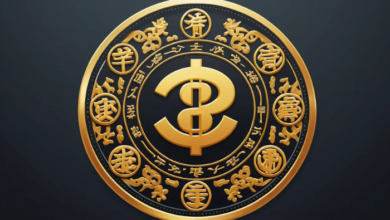Inflation decreased after Trump’s ‘day of release’ rates, challenging fears

Consumer prices increased 2.3% in April compared to a year ago, cooling slightly from the previous month and challenging the fears of an increase in inflation after the “release day” of President Donald Trump last month. The reading, which marked the lowest inflation rate since 2021, agreed with the expectations of economists.
Egg prices fell 10% in April compared to the previous month, offering some relief for buyers, according to the data. Even so, egg prices are much higher than a year ago.
On the contrary, gasoline prices fell 12% during the past year. The national average price of a gallon of gas is $ 3.15, AAA The data show.
Trump’s tariff climb, announced on April 2, triggered concern between economists and consumers about a possible explosion of inflation, since importers generally transmit a part of such taxes in the form of price increases.
Government data On Tuesday he showed that no increases in sudden prices have passed, at least for now.
However, many analysts anticipate a revival of inflation in the coming months as retailers begin to replace the inventory with imported goods after tariffs entered into force.
Even so, a reversal of some levies from the “day of liberation” can soften the impact on inflation.
Trump stopped a large strip of the so -called “reciprocal tariffs” a few days after the ad.
On Monday, Trump temporarily cut tariffs on China from 145% to 30%.
China taxes will remain at the reduced rate for 90 days, while the two parties negotiate a broader commercial agreement, a joint statement from the United States-China said on Monday. China also agreed to temporarily reduce its tariffs on US goods from 125% to 10%.
It is expected that the reversal of the levies on Chinese products will reduce the average cost of household tariffs this year from $ 4,900 to $ 2,800, the Yale Budget Laboratory found.
Even so, the United States continues to impose a series of taxes that have been issued since Trump assumed the position.
A general 10% rate applies to imports from almost all countries. Additional tariffs have reached automotive pieces, as well as steel and aluminum. The duties remain for some goods from Mexico and Canada.

President Donald Trump speaks during a press conference on the prices of prescription medications, in the Roosevelt room of the White House, on May 12, 2025, in Washington.
Andrew Harnik/Getty Images
Speaking last week before the reversal of tariffs on China, the president of the Federal Reserve, Jerome Powell, said that the economy remains in “solid form”, but warned that Trump’s rates policy could cause greater inflation and economic slowdown.
“If the great increase in tariffs that have been announced are sustained, they are likely to generate an increase in inflation and a slowdown in economic growth,” Powell said.
“However, all these policies are evolving and their effects on the economy are still very uncertain,” he added.
Inflation levels are not close to the 2022 peak of more than 9%, although it remains slightly higher than the 2%federal target rate.
The Fed last week chose to leave interest rates without changes, maintaining the costs of elevated loans as policy formulators expect the impact of tariffs.
The central bankers will announce their next interest rate decision on June 18. Investors set a 88% probability that the FED maintains interest rates at current levels, according to the CME Fedwatch toolA measure of the feeling of the market.





